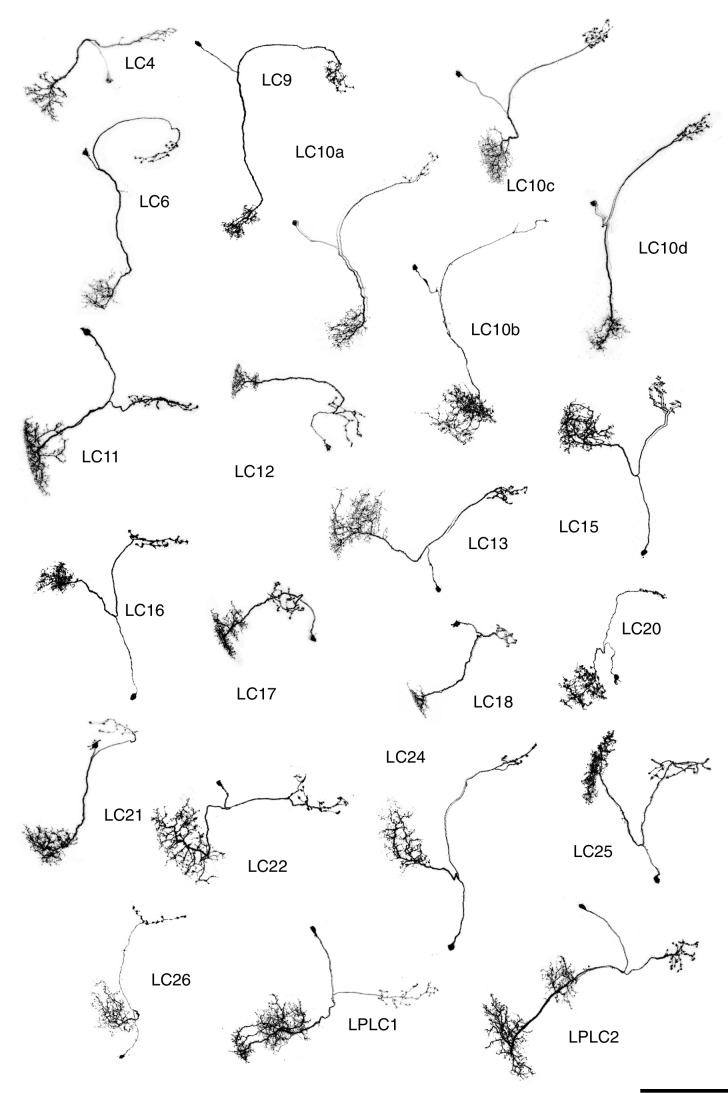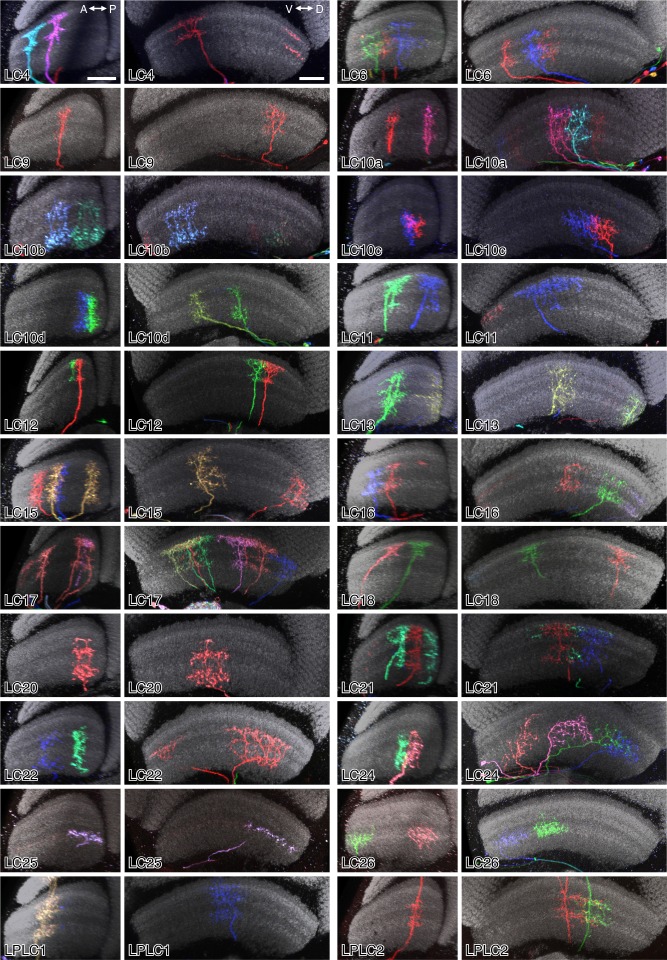(
A) LPLC1. (
B) LPLC2. (
C) LPLC4. Numbers indicate the four LP layers (
Fischbach and Dittrich, 1989). Similar to lobula layers, the LP layers can be identified by changes in the intensity of anti-Brp labeling: Each LP layer shows a band of strong anti-Brp signal flanked by weaker labeling. All three LPLC cell types have processes in all lobula plate layers and several layers of the lobula but differ in details of arbor structure and layer patterns. For example, lobula layers of LPLC4 (mainly Lo2, Lo4 and Lo6) are different from both LPLC1 (Lo2-Lo4 and Lo5B) and LPLC2 (Lo4 and Lo5B). The presence of processes in multiple lobula plate layers, as shown by all LPLC types, could support responses to stimuli that combine different directions of motion, such as a visual loom (
Schilling and Borst, 2015). Scale bars represent 20 µm.



